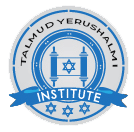The Jerusalem Talmud Today
Notwithstanding the continued interest in the Jerusalem Talmud through out the generations, this Talmud still remains a relatively closed book. A major factor contributing to this paucity is the fact that the Jerusalem Talmud is extremely terse and often difficult to comprehend. One can not always tell if an expression is a statement or a question nor does one always know where a question starts and where an answer begins. The Jerusalem Talmud often lacks the basic dialectic connective tissue commonplace in the Babylonian Talmud which makes the latter so much more understandable.
Another factor that has contributed to the general difficulty in comprehending the Jerusalem Talmud is the condition of the texts that are available to us. The text of the standard printings in many places is corrupted making it almost impossible to read. Traditional commentators, in an attempt to dispell the perception of the Jerusalem Talmud as incomprehensible, tend to come up with ingenious (though at times admittedly wanting and fanciful) explanations of such texts; only in rare cases where they had little choice would they acknowledge that the texts are corrupted beyond reconstruction.
Due to the efforts of scholars of the previous generation, such as Epstein and Lieberman and the discovery of Geniza Fragments and partial manuscripts of the Jerusalem Talmud (See https://sites.google.com/site/jtalacad/bibliography for a list of Geniza Fragment publications) much headway has been made in establishing a correct text of the Jerusalem Talmud. Intrumental to this was also the study of citations of the Jerusalem Talmud in the writings of the Rishonim which often preserved correct readings. (http://webapp2.netanya.ac.il/talmud/ – online citation database).
Of particular interest is the Leiden manuscript which was one of the four manuscripts used in the editio principio (Vilna printing) and was unknown to any of the Traditional commentators. Although the manuscript is faulty it preserves many good readings which were often corrupted by printers who misunderstood the text. The series entitled “Talmudah shel Erets Yisrael” uses the Leiden Manuscript as its base-text and draws upon Geniza materials to establish a correct text of the Talmud.
As a prerequisite to advancing the study of the Jerusalem Talmud Rabbi Shaul Lieberman listed two additional desiderata. A terminological dictionary and an improved Masoreth hashas of the Jerusalem Talmud. The former has been met in recent times and the latter is on its way.
Recent generations have seen a renewed interest in the Jerusalem Talmud both on the Academic and more popular fronts. Advancements in the scholarship of the redaction, terminology, vocabulary, general phenomenology and obviously of the textual witnesses of the Jerusalem Talmud have contributed to our understanding of its contents enormously.
A well known teaching of the Gaon of Vilna (and reiterated by Rav Kook) tells us that Messianic Times will be marked by the resurging interest in the Jerusalem Talmud.

